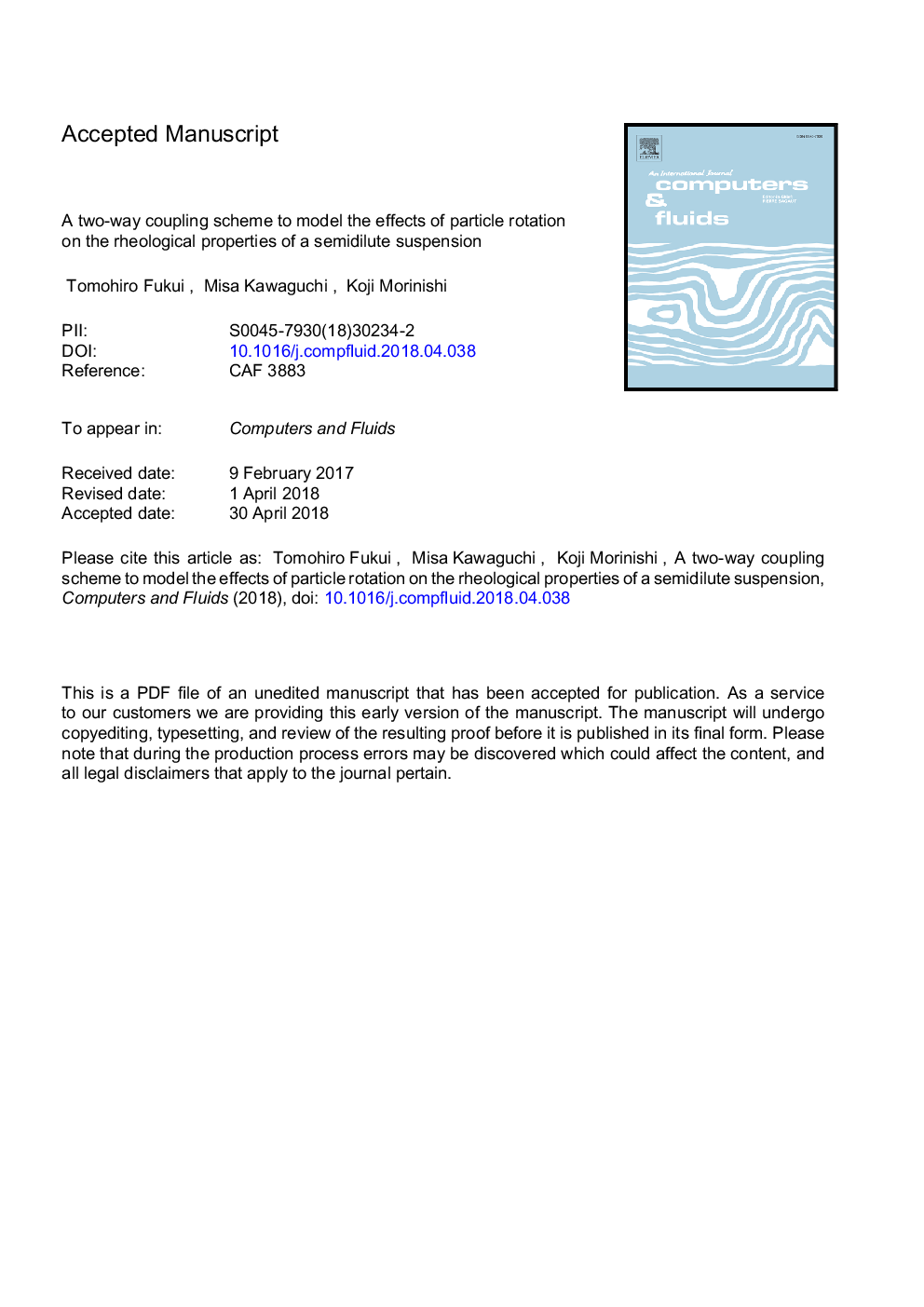| Article ID | Journal | Published Year | Pages | File Type |
|---|---|---|---|---|
| 8942090 | Computers & Fluids | 2018 | 44 Pages |
Abstract
According to Einstein's viscosity formula, the effective viscosity of a suspension is related to the volume fraction Ï of suspended particles. Higher-order terms, which include contributions from hydrodynamic interactions, become more important when the concentration of the suspension reaches around 25%. The coefficient β of the term quadratic in Ï, however, has not been incontrovertibly validated. In order to investigate the effects on the macroscopic rheology of a suspension due to the rotational motions of the microscopic suspended particles-which are usually neglected in analytical and numerical studies-we have performed simulations of a pressure-driven flow using a two-way coupling method (defined in text). We used the regularized lattice Boltzmann equation for the fluid part of the calculation, and we employed Newton's second law of motion and the equation of angular motion for the translational and rotational motions of the rigid particles. As a result, we found that the particles rotate to achieve kinetic balance with the surrounding hydrodynamic forces, which results in a decrease in fluid resistance. It is therefore important to take into account the particles' rotational motions and the accompanying changes in the flow field in order to evaluate the effective viscosity of a suspension. The spatial variation of the relative viscosity determined from the wall shear stress becomes more significant with increasing area fraction. We found that the value of the coefficient β may increase due to hydrodynamic resistance against the rotational motions of the particles.
Related Topics
Physical Sciences and Engineering
Engineering
Computational Mechanics
Authors
Tomohiro Fukui, Misa Kawaguchi, Koji Morinishi,
